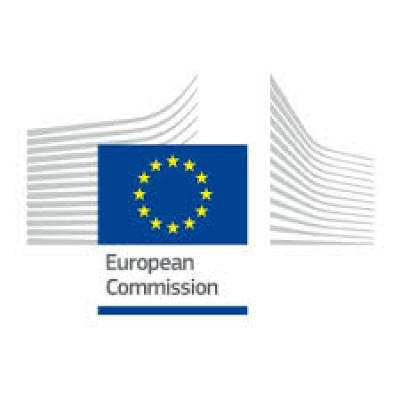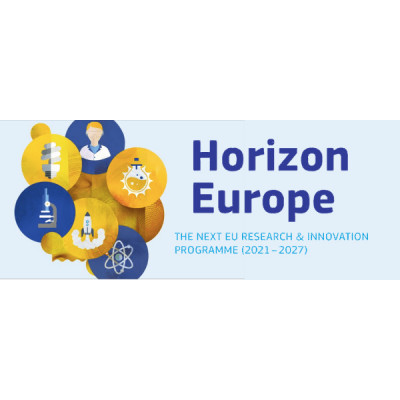
Energy Performance and Smart Readiness of Buildings – Making the Instruments Work
Details
Description
Call Updates
Mar 20, 2023 3:30:27 PM
CALL UPDATE: FLASH EVALUATION RESULTS
EVALUATION results
Published: 17.05.2022
Deadline: 16.11.2022
Available budget: 98 000 000 EUR
The results of the evaluation are as follows:
Call LIFE-2022-CET-BUILDPERFORM:
Number of proposals submitted (including proposals transferred from or to other calls): 4
Number of ineligible proposals: 1
Number of above-threshold proposals: 3
Total budget requested for above-threshold proposals: EUR 5.865.781,37
We recently informed the applicants about the evaluation results for their proposals.
For questions, please contact CINEA-LIFE-CET@ec.europa.eu.
Nov 21, 2022 3:20:18 PM
On 16 November 2022, a total of 225 proposals were submitted in response to the following topics: LIFE-2022-CET-BUILDPERFORM: 4 proposals
Jun 30, 2022 5:24:04 PM
We want to draw your attention to the possibility to get support from your National Contact Point (European National Contact Points (europa.eu)). To facilitate such support, it would be beneficial to add your National Contact Point (NCP) under the “Participants” step of the application, by clicking on “Add contact”. Then, Under “Project role”, use the option “Contact person” and add your NCP’s data.
https://cinea.ec.europa.eu/programmes/life/history-life/life-contacts/european-national-contact-points_en
May 17, 2022 9:57:57 AM
The submission session is now available for: LIFE-2022-CET-BUILDPERFORM(LIFE-PJG)
Energy performance and Smart Readiness of buildings – making the instruments work
TOPIC ID: LIFE-2022-CET-BUILDPERFORM
Programme: Programme for Environment and Climate Action (LIFE)
Work programme part: LIFE-2021-2024
Call: LIFE-2022-CET (LIFE-2022-CET)
Work programme year: LIFE-2021-2024
Type of action: LIFE-PJG LIFE Project Grants
Type of MGA: LIFE Action Grant Budget-Based [LIFE-AG]
Deadline model: single-stage
Opening date: 17 May 2022
Deadline date: 16 November 2022 17:00:00 Brussels time
Energy Performance Certificates (EPC) are a core element of the Energy Performance of Buildings Directive. They create transparency about a building’s energy performance and identify potentials for cost-effective energetic improvements. They are also an important source for data determining the energy performance of the building stock.
Despite the relevance of EPCs as an instrument to valorise energy performance, their implementation shows considerable gaps and deficits. For example, the coverage of EPCs is relatively low; they are often not adequately advertised. The methodologies for the calculation and rating of EPCs are to a large extent not harmonised; also, the formation and training and quality control of energy advisers/ auditors does not follow agreed standards. Moreover, many aspects that impact a building’s performance are not properly reflected in current EPCs. All these aspects affect the reliability of and the trust into EPCs. At the same time, research has shown that new technologies can considerably contribute to more accurate and up-to-date energy performance by relying on actual building data.
Under the European Green Deal, the policy framework for buildings is set out to become more stringent. The European Commission has proposed to improve the quality and information content of EPCs and make them more coherent across the Member States, for example by introducing a harmonised scale and template for EPCs, shortening their validity for the worst performing buildings from 10 to 5 years. As regards the Smart Readiness Indicator, the Commission proposed to make it mandatory for non-residential buildings with larger heating systems.[1]
The effective design and implementation of the individual instruments are essential. In addition and in order to exploit synergies, it is, however, also important that the different tools are synchronised and better aligned, resulting in more consistency as well as in a reduction of transaction costs.
Against this background, this topic aims to call for actions that a) support effective policy design and implementation of Energy Performance Certificates and the Smart Readiness Indicator and improve synergies across assessment and disclosure instruments for buildings, and b) foster the market up-take of these instruments through appropriate methodologies, tools and processes involving key stakeholders.
Scope:Proposals are expected to focus on one of the two scopes below. The scope addressed should be specified in the proposal's introduction. In case a proposal addresses elements of both scopes, this should be justified.
Scope A - Supporting Member States and their implementing bodies
Actions are expected to support Member States and their implementing bodies in the implementation of the Energy Performance Certificates and of the Smart Readiness Indicator as established in Directive 2010/31/EU, in related delegated Acts[2] and in the up-coming re-cast of the Directive. This includes all stages of the policy design, implementation and evaluation.
More specifically, actions are expected to provide support and technical advice for one or more of the following aspects:
- the contextualisation of the requirements according to the national context, including the conceptualisation and design of features that are particularly relevant for the national specificities and that make the instruments more effective, meaningful and user-friendly.
- the assessment of policy design options and their impacts.
- the ex-ante testing of approaches and moderation of key stakeholders to ensure that the policy design is fit for the market.
- improving the methodologies to collect, aggregate and analyse data, also in view of setting-up appropriate national databases, including their use by financial institutions to contribute to de-risk financing on energy efficiency and building renovations.
- the integration of EPCs with the Smart Readiness Indicator, e.g. in view of
- the integration of the energy performance assessment methodologies.
- the combination and visualisation of data to best match the needs of the users.
- the methodological coordination of EPCs with other disclosure and planning tools, notably Renovation Passports and Digital Logbooks, to achieve more coherence.
- For EPCs specifically,
- developing the methodologies for the re-scaling of the EPCs including the identification, mapping and classification of worst-performing buildings.
- refining and up-dating the methodologies to calculate EPCs, also in view of a more harmonised approach and on the basis of actual consumption.
- the setting up of central tools and platforms that allow for a more interactive and dynamic use of EPCs and of the data that is included in EPCs and other disclosure instruments.
- For the SRI specifically,
- the identification of implementation paths and good practices and the sharing of experiences with Member States that have already started implementing the Smart Readiness Indicator.
Scope B - Supporting the market up-take of Energy Performance Certificates and of the Smart Readiness Indicator
Actions are expected to improve the market up-take of Energy Performance Certificates and the Smart Readiness Indicator and to foster the implementation synergies across the different disclosure and assessment instruments.
The actions should for example:
- Develop, test and promote approaches that integrate the implementation procedures of EPCs and other instruments, notably the SRI, for example as regards the collection and use of buildings information and as regards the certification and quality check across the schemes.
- Improve the qualification and training and auditors, notably in view of developing and testing common training schemes for EPC / SRI auditors.
- Improve the synergies and links between inspections and audits carried out for EPCs, also in view of making the instruments more cost-efficient.
- Contribute to valorising EPCs and the Smart Readiness Indicator and make them more salient in investment decisions; in this, demonstrate the market value of Energy Performance Certificates and the Smart Readiness of buildings and strengthen the link of these instruments with real estate valuation and with access to financing.
- Support the market up-take of EPCs and the Smart Readiness Indicator through initiatives that enhance the visibility of and trust in the instruments.
- Involve and engage key building actors, such as housing associations, real-estate sector, public authorities to promote the effective implementation of EPCs and the roll-out of the SRI.
The Commission considers that proposals requesting a contribution from the EU of up to EUR 2 million would allow the specific objectives to be addressed appropriately. Nonetheless, this does not preclude submission and selection of proposals requesting other amounts.
Expected Impact:Proposals should result in:
- More effective and more ambitious implementation of the provisions related to Energy Performance Certificates and the Smart Readiness Indicator, also in view of an enhanced policy framework.
- More effective, meaningful and user-friendly design of the instruments and better user acceptance.
- Higher degree of coherence across the different disclosure tools established for the visualisation of a building’s current and programmed energy performance and its degree of smartness.
- Higher degree of coherence across Member States, e.g. with regard to policy design and calculation and data collection methods.
- Use of more consistent methodologies and tools, for example for data collection and calculation, both for the individual instrument and across instruments; improved monitoring.
- Better quality, transparency and cost-effectiveness of the assessment procedures carried out for the Energy Performance Certificate and Smart Readiness Indicator; better use of synergies across instruments.
- More comprehensive and faster up-take of Energy Performance Certificates and of the SRI in the market, including stronger consideration of the EPCs and the SRI in the valorisation of buildings and buildings portfolios.
Proposals should quantify their impacts using the indicators listed below, where relevant, as well as other project-specific performance indicators:
- Primary energy savings triggered by the project (in GWh/year).
- Renewable energy generation triggered by the project (in GWh/year).
- Investments in sustainable energy triggered by the project (cumulative, in million Euro).
These impacts should be demonstrated during the project and within 5 years after the project lifetime.
[1]Buildings with an effective rated of the heating/ventilation system output of over 290 kW.
[2]Commission Delegated Regulation (EU) 2020/2155 of 14 October 2020 supplementing Directive (EU) 2010/31/EU of the European Parliament and of the Council by establishing an optional common European Union scheme for rating the smart readiness of buildings and Regulations 2020/2155, and Commission Implementing Regulation (EU) 2020/2156 of 14 October 2020 detailing the technical modalities for the effective implementation of an optional common Union scheme for rating the smart readiness of buildings



